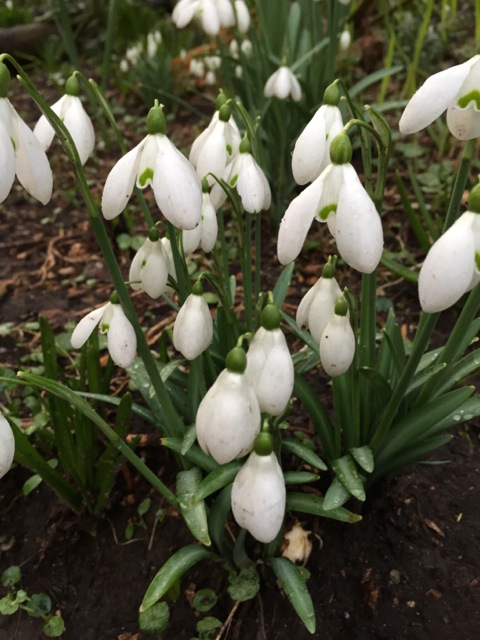-

Winter Garden Visits
24th February 2015 • Places to Visit • Stephanie DonaldsonWhy anyone would visit a garden in the winter is a bit of a mystery to the non-enthusiast, but for those in the know it provides the perfect opportunity to see the bones of the garden. Ok, you do need to wrap up in your warmest clothes and wear waterproof footwear, but it does allow you to see how the experts maintain, protect and prepare for the coming season. Which is why I went along to Great Dixter’s Winter Open Weekend. The snowdrops were at their peak carpeting the ground beneath the shrubs in the many borders. This confirms advice I read recently that you should plant snowdrops where you don’t garden – in other words in places where they will not be dug up or disturbed rather than in the middle of flowerbeds. Undisturbed, they will rapidly spread, just as they have at Great Dixter. It was seeing the tall, strong-growing Galanthus Atkinsii there a few winters back that inspired me to introduce it in my own garden where it is now multiplying happily. One of the advantages of growing the taller varieties is that they are less prone to getting splashed with soil or mulch when it rains heavily. S. Arnott is another tall variety – with the added bonus of a delightful scent – but for some reason it seems reluctant to multiply in my garden.

Galanthus S Arnott

Galanthus Atkinsii
Aside from the snowdrops, the other plant that drew my eye was a group of the wonderful ‘Anna’s Red’ hellebore. I viewed this with more than a little envy, having bought one at a previous winter weekend. Sadly, despite planting it in a spot where hellebores usually thrive, it never reappeared after the first year. A friend had a similar experience, so I do wonder if it needs special treatment. At £20 a go, I’m reluctant to try again, however lovely they are.
Hellebore ‘Anna’s Red’
Because it can be very cold at Great Dixter, tender plants are left well wrapped up until spring. I rather like the sere beauty of the tropical garden with its looming structures and monochromatic palette. Throughout the garden seedheads are left to provide late winter food for the birds.

A wintery tropical garden


Seedheads still provide food for the birds

Behind every good garden there’s a good compost heap, and at Dixter there are several huge heaps in varying states of decomposition. Black gold indeed.











